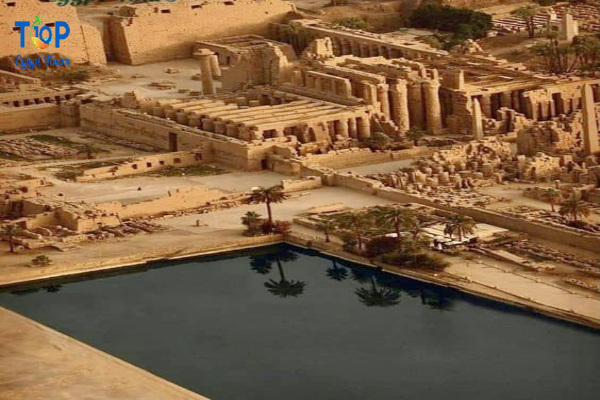Luxor and Karnak Temples, Step into the heart of ancient Egypt as we unravel the mystique of Luxor and Karnak Temples. “Top Ten Egypt Tours” invites you on an extraordinary journey through time, where monumental structures whisper tales of pharaohs and gods.
Journey Into Luxor and Karnak Temples:
Luxor Temple:
Nestled on the east bank of the Nile, Luxor Temple stands as a living testament to the grandeur of the New Kingdom. Adorned with colossal statues and intricate hieroglyphs, Luxor Temple is a testament to the ancient Egyptians’ devotion to rejuvenating kingship. Walk the Avenue of Sphinxes and stand in awe before the colossal statues of Ramses II, immersing yourself in the splendor of this sacred site.
- Nicknamed “Ipet-resyt” (Southern Sanctuary) by the ancient Egyptians, the Luxor Temple was dedicated to the Theban triad: Amun, Mut, and Khonsu.
- Construction began around 1400 BC and continued for centuries under various pharaohs, including Ramses II and Amenhotep III.
- The temple is known for its intricate architecture, including a massive pylon entrance, towering columns, and a hypostyle hall adorned with vibrant paintings.
- It played a crucial role in religious festivals, particularly the Opet Festival, where the cult statue of Amun traveled in procession from Karnak to Luxor.
- Today, the Luxor Temple is a UNESCO World Heritage Site and a major tourist attraction, offering a glimpse into the grandeur and splendor of ancient Egypt.
Karnak Temple Complex:
Just north of Luxor, the Karnak Temple Complex unfolds as a colossal open-air museum, the beating heart of ancient Thebes. Enter the Hypostyle Hall, a mesmerizing forest of towering columns adorned with divine carvings. Marvel at the sacred lake, once used for ritual purification, and explore the labyrinthine network of temples dedicated to various gods. Karnak is a living testament to the spiritual and architectural prowess of ancient Egypt.
- Situated on the east bank of the Nile, the Karnak Temple Complex is a vast collection of sanctuaries, pylons, obelisks, and other structures, representing the combined efforts of over 30 pharaohs.
- Construction started around 2055 BC and continued for centuries, making it one of the longest-used religious sites in the world.
- The complex is dedicated to the Theban triad, with each major section devoted to a specific deity.
- Notable structures include the Great Hypostyle Hall, with its 134 towering columns, and the Precinct of Amun-Re, which houses a sacred lake and the colossal statue of Ramses II.
- Karnak was the center of the ancient Egyptian religion and served as a powerful symbol of the pharaoh’s authority.
- Today, the Karnak Temple Complex is a UNESCO World Heritage Site and a popular tourist destination, offering visitors a chance to explore the architectural marvels and religious significance of ancient Egypt.
Both Luxor and Karnak Temples offer visitors a glimpse into ancient Egyptian culture and religion. They are also popular tourist destinations that attract millions of visitors every year. If you’re interested in learning more about these temples or other ancient landmarks in Egypt, we invite you to explore our website and discover more about our tours and packages.
Our experienced guides will take you on a journey through time, allowing you to experience the rich history and culture of Ancient Thebes for yourself. Contact us today to book your tour!



Comment (0)